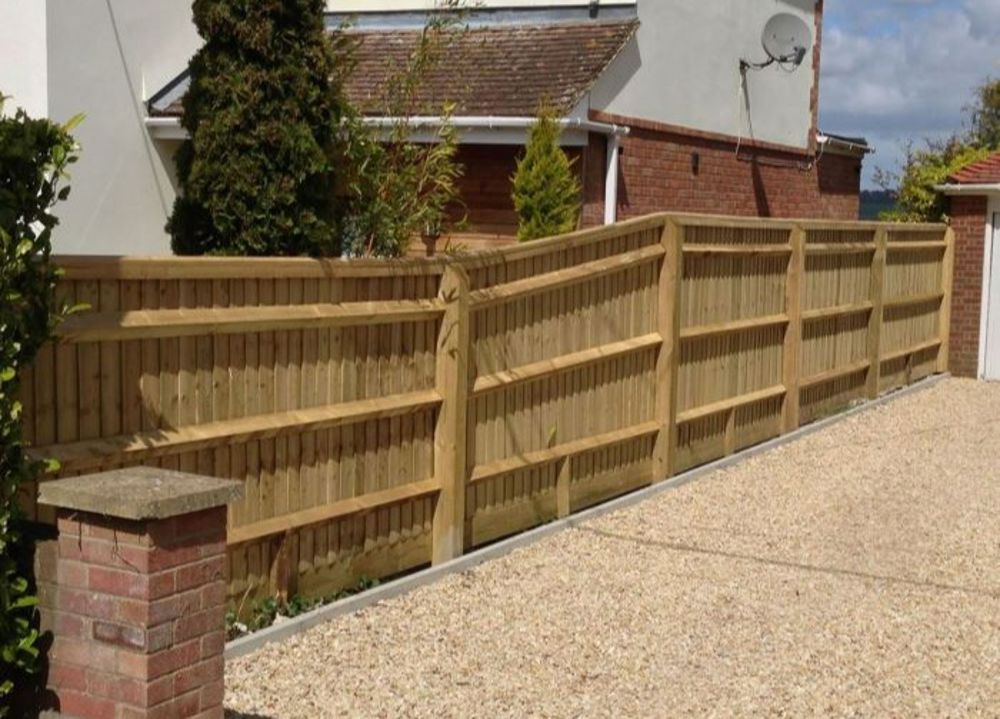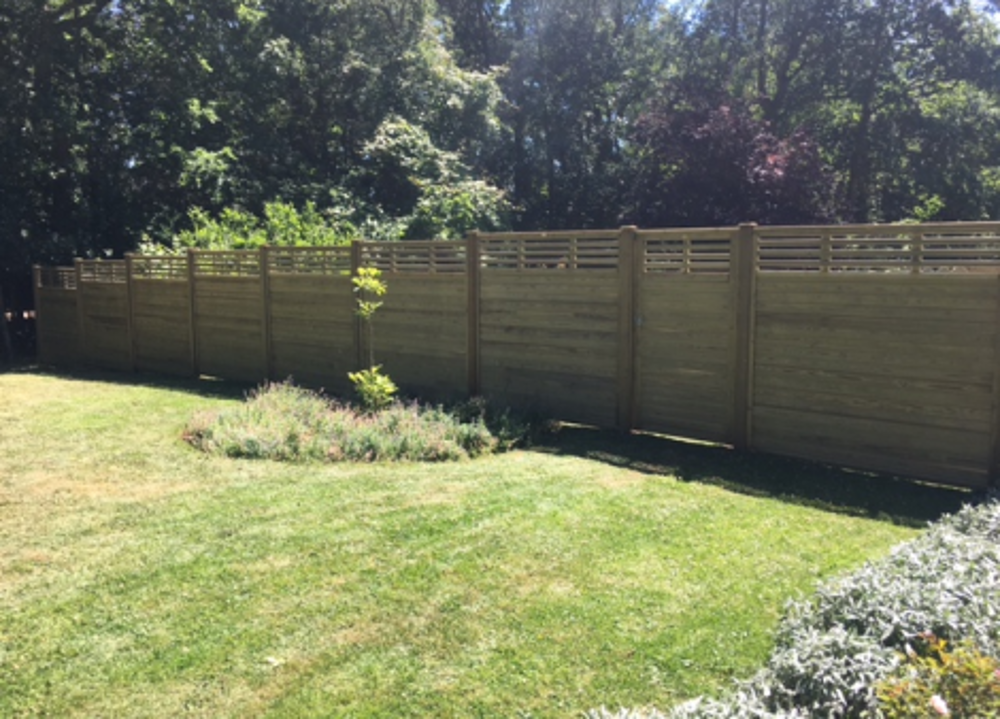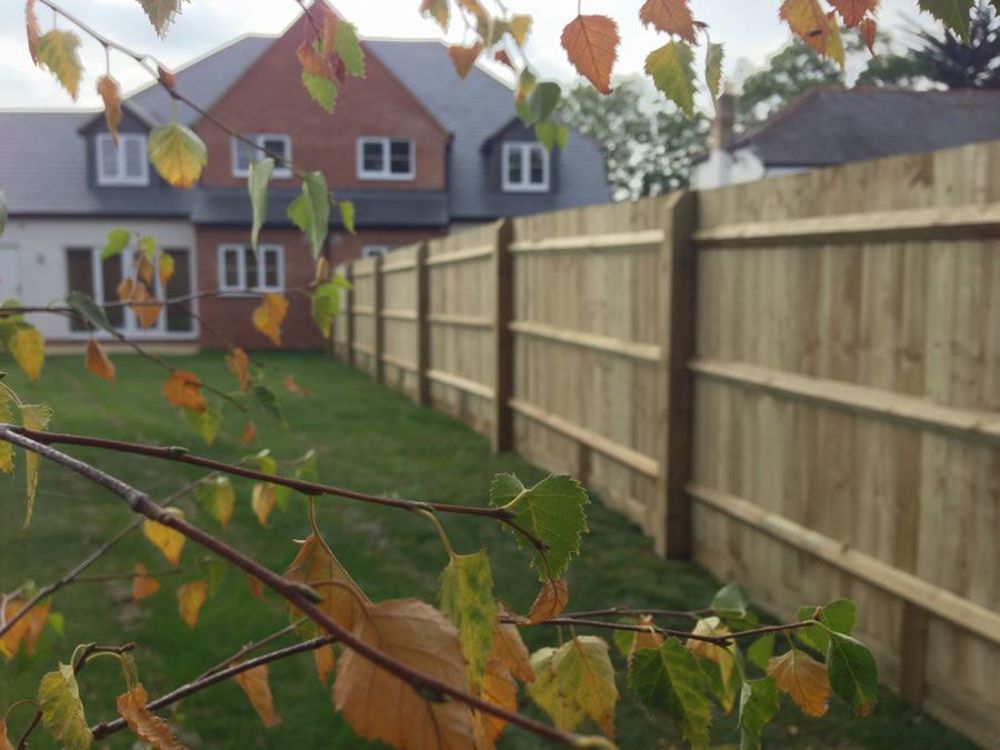Choosing the Best Type of Fence for Your Garden
Thinking of replacing your garden fence? There are so many types of fence panel to choose from these days, why not go for a slightly different look this time? But where do you start? Our fencing style guide will help you with the options.
The first thing to remember is that it's not just about looks; consider your fence's function, too. To know which style of fence panel is right for you, start by asking yourself a few simple questions:
- What is the main purpose of the fence?
- Does it need to provide privacy?
- Keep pets from straying?
- Provide a windbreak and shelter for plants?
- How much maintenance are you willing to do? Some types of fences and materials are likely to last longer than others.
- What's your budget?
Now you can start to think of fence types that fit the bill. There are some ideas below, but if you need more inspiration, here's a complete list of all the main fence types we can supply and install for you.
Close-board / Featherboard Fencing
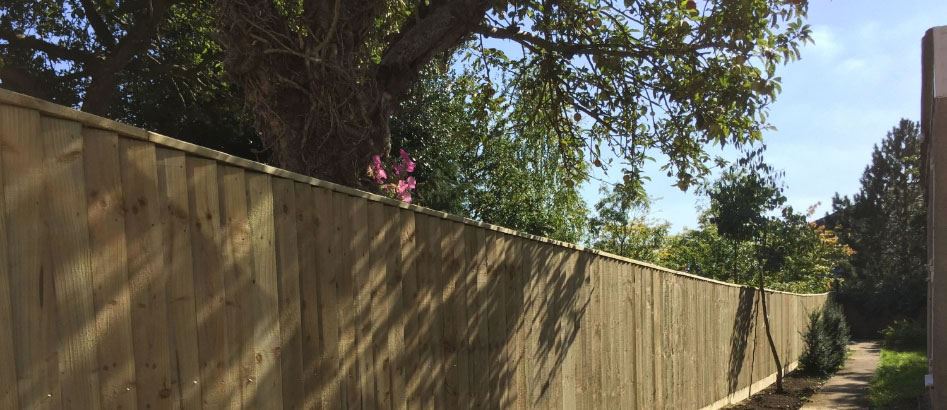
Close-board fences, also called featherboard, are strong and solid, constructed with overlapping vertical feather-edge wooden boards. This type of fencing is commonly used in back gardens – it’s a medium budget option, neat and attractive, offering good privacy and providing some shelter from wind and frost to delicate shrubs.
Close-board fencing is typically 6ft (1.8m) tall, but it's available in various heights. Keep in mind, however, that many local authorities have height restrictions on boundary fencing.
Pros
- Ideal for most gardens
- Robust and long-lasting
- Its height (usually 6ft) provides some security
- Provides privacy
- Deters intruders
- Good for pet-owners
- Offers shade and shelter for tender plants and shrubs
Cons
- Can be expensive for a large garden
- Its closed-up boards can be buffeted by strong winds, though it's stronger than a larch lap fence panel
- Maintenance required
Larch-Lap Panel Fencing
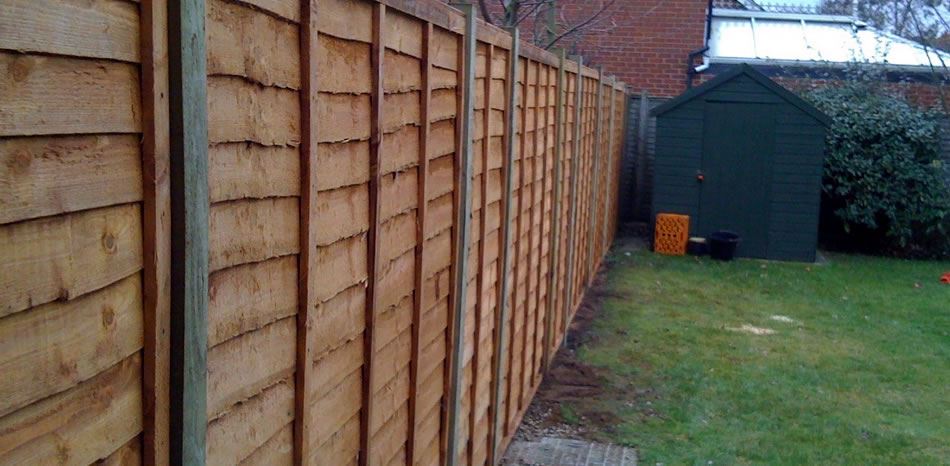
Larch-lap panel fencing is a common type of budget fencing made of horizontal slats. Like close-board fencing, it can be used with either timber or concrete posts and gravel boards, with the same advantages and disadvantages to these as explained above.
Although offering good value, larch-lap panel fencing is not as robust as close-board fencing, being more prone to damage in high winds.
Pros
- Suitable for most gardens
- Cheaper than close-board fencing
- Provides privacy
- Deters intruders
- Ideal for homes with pets
Cons
- Not as robust or long-lasting as close board fencing
- Maintenance required to prolong the life of the timber
- Functional, but less attractive than other styles
Timber Palisade / Picket Fencing
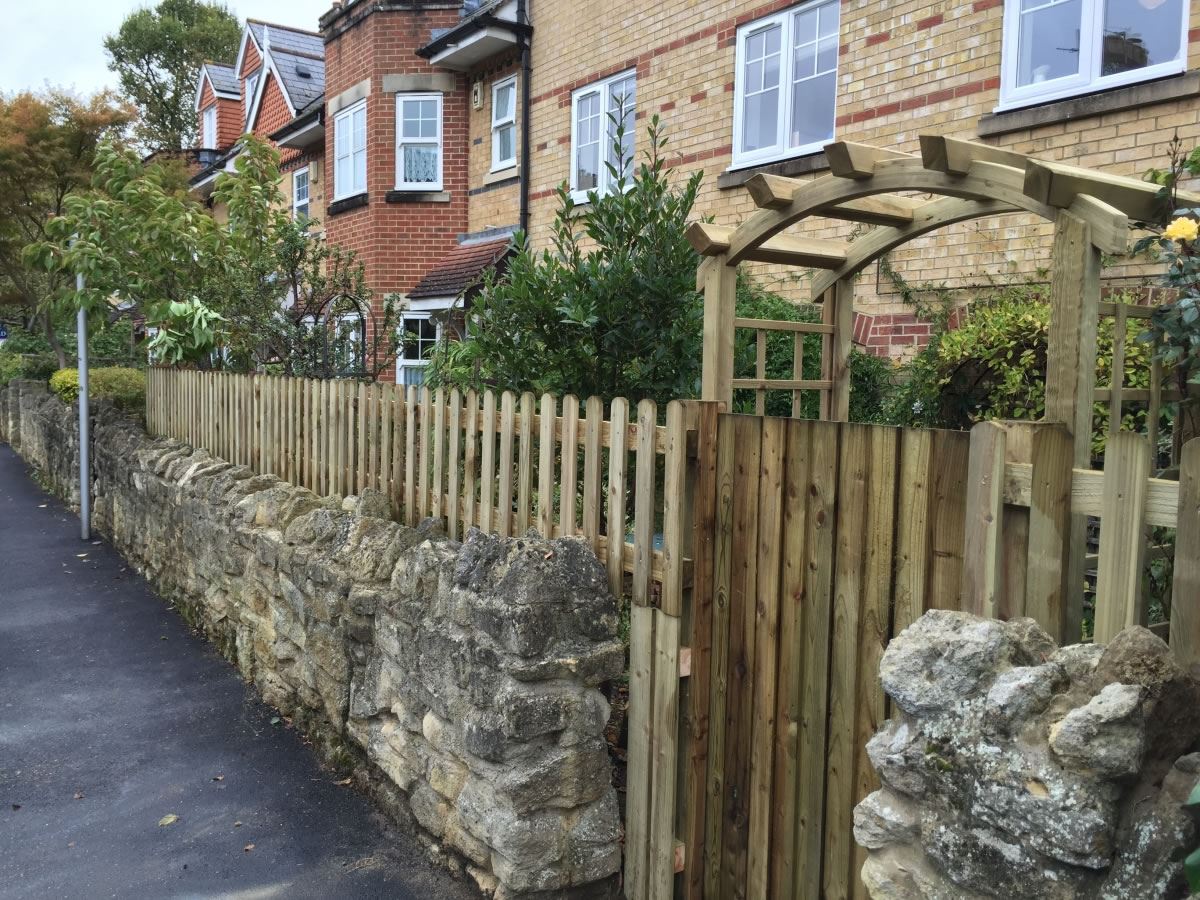
If you want a look that’s traditional and decorative, you might consider timber palisade fencing, more commonly known as picket fencing. Picket fences are mostly seen in front gardens, where they give a home traditional kerb appeal, but if you're a sociable type that likes to chat over the fence with neighbours, a picket fence in the rear garden would look lovely, too.
Although wood is the conventional material, picket fencing can also be made from PVC for a lower maintenance option. There are a few disadvantages to using PVC however: temperature change can make it brittle, prone to mould and it can be more expensive than wood.
This style of fencing is traditionally quite low. With its spacing between the timbers, it's less prone to wind damage, but it doesn't offer much protection to tender plants, either.
Pros
- A good option for front gardens
- Ideal to protect ponds or swimming pools
- Provides a good boundary marker
- Traditional, attractive looks
- Lets light through / doesn’t block your view
- Less prone to wind damage
Cons
- Doesn’t provide privacy
- Doesn’t provide much security
- Would not contain some dogs
- Some maintenance required to protect timber
- Won't provide much protection for plants
Slatted Fence Panels
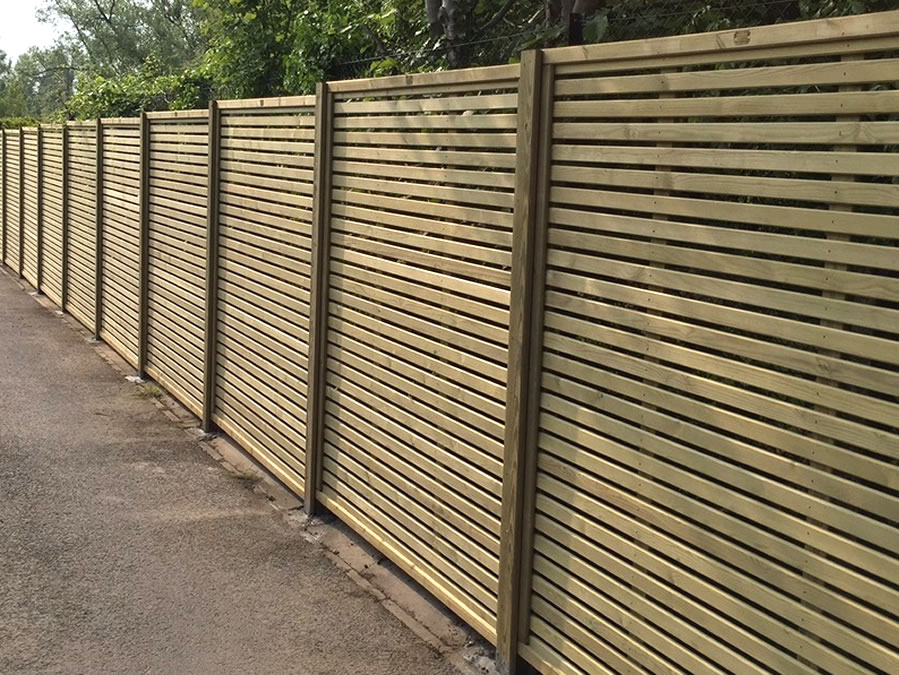
Slatted fence panels give a more sleek, more contemporary look to your outside space, ideal if privacy is not an issue. They can make great dividers for different sections of your garden. The effect of sunlight slanting through the gaps is particularly attractive.
Pros
- Available in a range of heights and styles
- Sleek, modern appearance
- Horizontal slats can make your garden appear longer
- Gaps between slats allow wind through, reducing resistance and improving longevity
Cons
- Don't offer complete privacy on a boundary
- Can let weeds grow through
Hit & Miss Fencing

There's a distinctive and particularly attractive pattern to hit and miss fence panels, created by smooth-planed horizontal boards that are alternately fixed to the front and back of the panel. This is a medium-range budget type of fencing that can look good in both traditional and contemporary gardens.
Pros
- An attractive fence type that looks good on both sides
- Offers good security and privacy
- Gaps between the boards allow wind to pass through - less wind resistance
- Vertical hit and miss style is also available
Cons
- Higher maintenance - tricky to reach boards on the inside of the panel for painting
- Gaps between boards can be a route for persistent weeds on the other side
- For bigger budgets
Additional considerations for your garden fence
Fence Posts
If you've got some idea now which type of fence panel would suit your garden, there's one more major consideration - what type of fence post is best?
There are three main options:
- Timber
- Concrete
- Galvanised steel (Durapost)
We've written in detail about all these fence post options in a separate article, but here's a very quick summary:
Timber posts can be a cheaper option if you’re on a tight budget, but they can rot if not well maintained and may eventually start to lean or even be blown over in heavy winds.
By contrast, concrete posts are more likely to last in the long term, especially against strong gusts of wind. They need less maintenance than wooden posts, too.
Concrete posts incur a higher up-front cost than timber posts, but their longevity makes them a better investment. You’ll still need to change the fence panels from time to time, but concrete posts won’t need to be replaced as often.
Galvanised steel posts (we install a great system called Durapost) are lighter and stronger than concrete, but twice as quick to install. They don't warp, crack or rot, and they can withstand winds up to 110mph. They're compatible with almost any type of fence.
Painting
If you choose a timber fence, it will usually come in a natural wood colour. If you don’t like this look, you can paint the fence a different colour. Even if you like the natural colour of the timber, it’s a good idea to safeguard your fence against harsh weather with a protective treatment for wood.
If you’ve chosen PVC as a material, keep in mind that it can’t usually be painted; you are committed to the colour as you purchased it.
Wind Protection
There are two options to protect your garden fence against the wind:
- use concrete or Durapost fence posts to hold the fence firmly in-place
- use fencing with gaps, such as a picket fence, to let wind blow through
For free advice about your garden fencing, or for a quote, please call 01865 863428 or 07900 938061.



